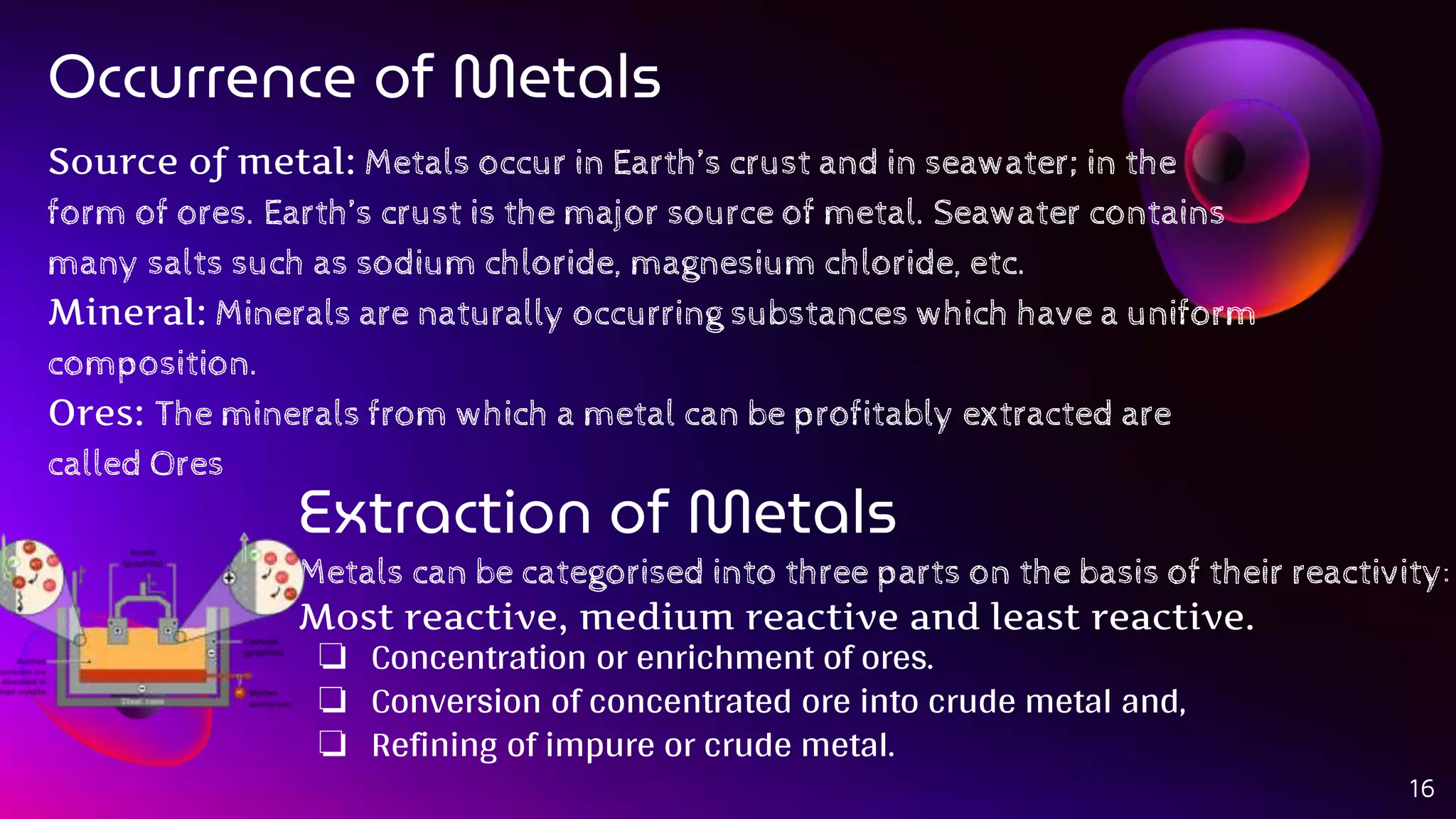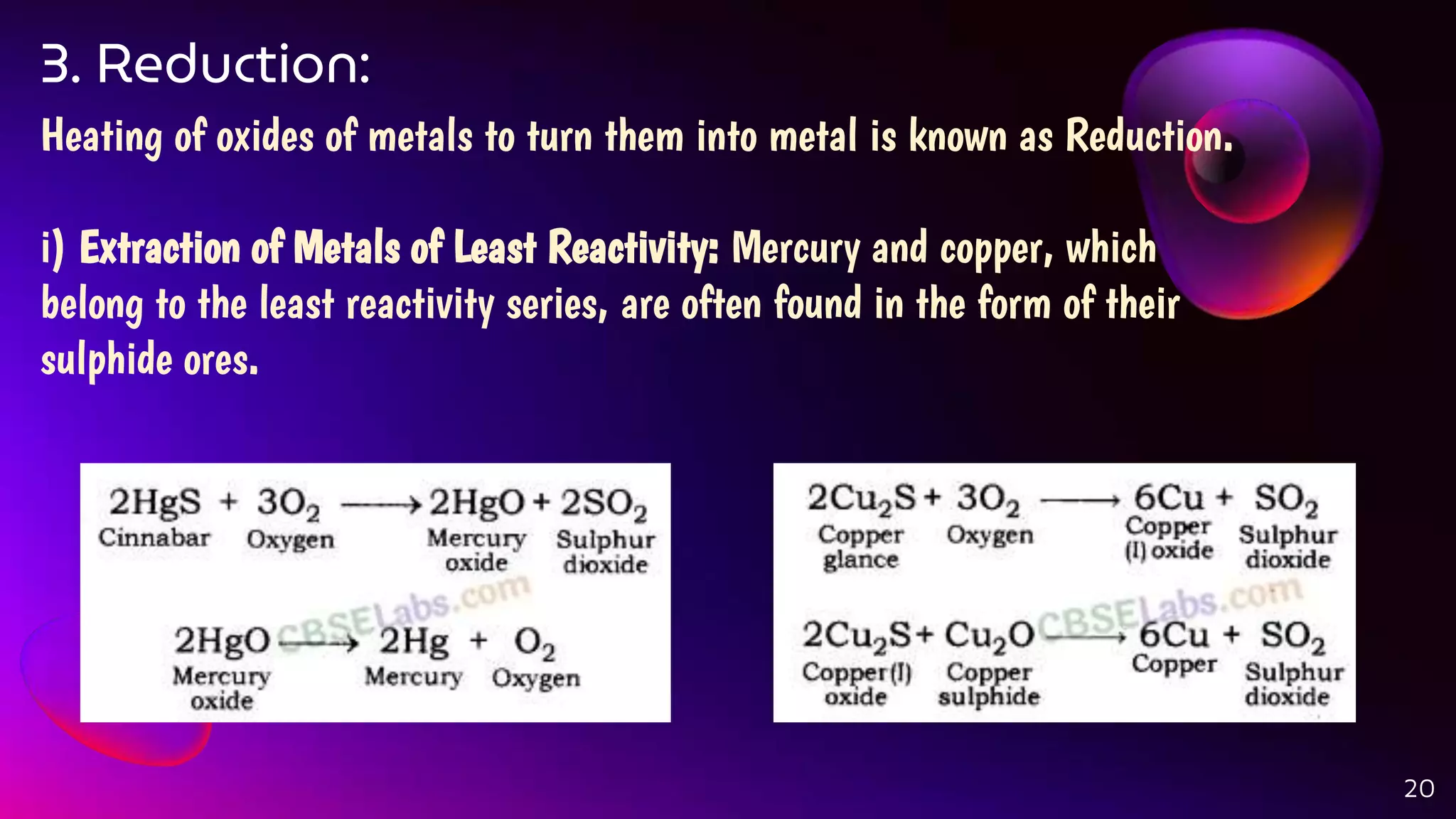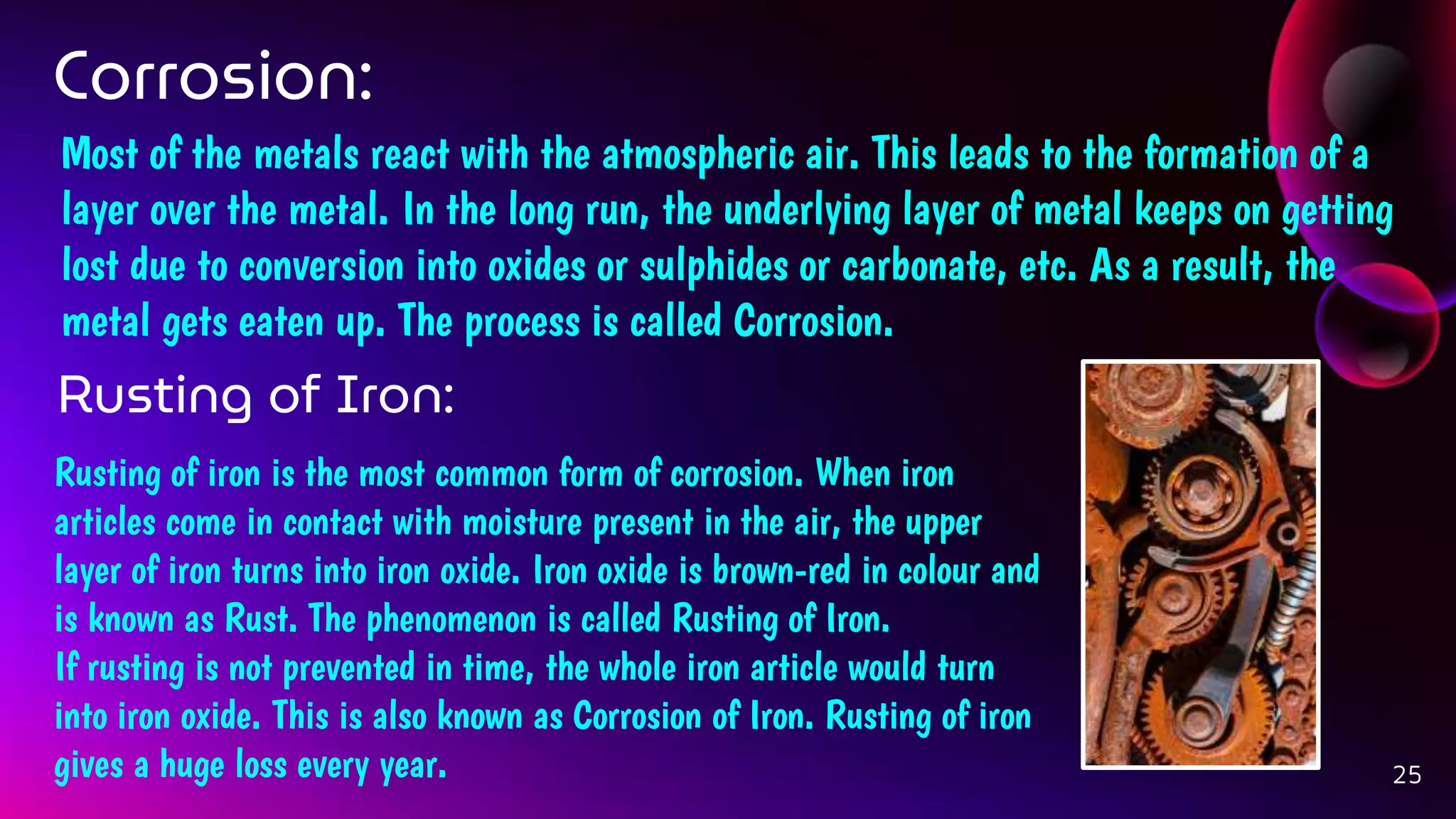The document provides an overview of the properties and reactions of metals and non-metals, detailing their physical and chemical characteristics, reactions with oxygen, water, acids, and each other. It also covers the extraction of metals from ores, including methods like roasting, calcination, reduction, and refining. Additionally, it discusses corrosion, particularly rusting, and prevention methods, as well as the composition of various alloys.


























![2005
Alloy: The homogeneous mixture of two or more
metals, or a metal and a non-metal is called Alloy.
2008 2010
Ferrous
alloys:
Manganese steel (Fe =
86% ; Mn = 13% ; C = 1%)
Non-
ferrous
alloys:
Brass (Cu = 80% ; Zn =
20%), Bronze (Cu = 90% ;
Sn = 10%)
Amalgams:
Sodium amalgams
[Na(Hg)] and Zinc
amalgams [Zn(Hg)]
27](https://image.slidesharecdn.com/metalsandnon-metals-chem1-230827065539-a7ec2ce9/75/Metals-and-Non-metals-Chem-pptx-27-2048.jpg)
